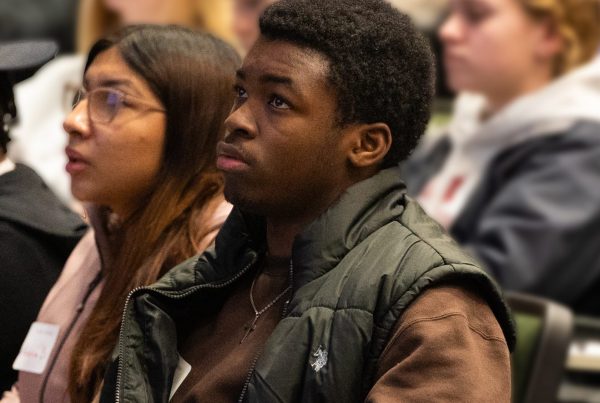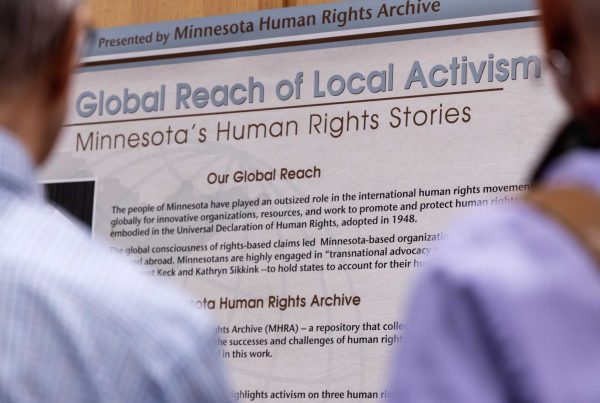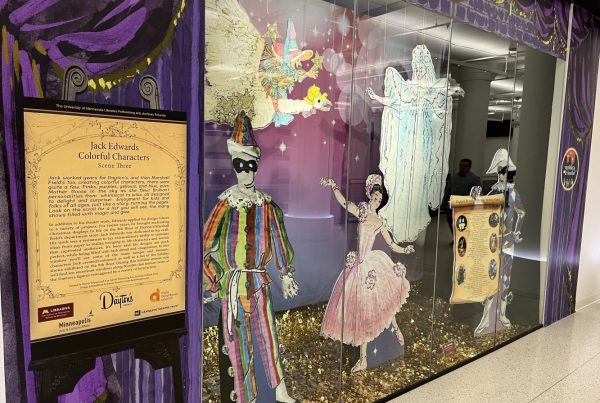By Hannah O’Neil
Project Archivist, Performing Arts Archives
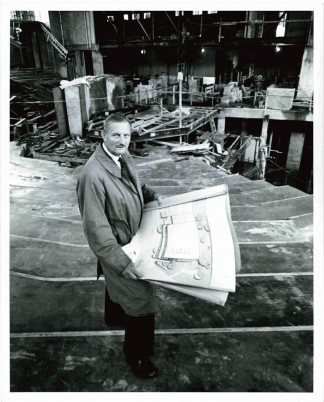
Tyrone Guthrie stands in what will be the auditorium of the Guthrie Theater. The iconic thrust stage is under construction behind him, 1962.
The Performing Arts Archives has received a grant from the National Endowment for the Humanities to fund the Guthrie Theater Archives project.
For the first time, we have the opportunity to bring this collection, which we have held since 1967, up to 21st century standards. Amidst the processing and logistics a project of this scope entails, through five decades of costume sketches, stage designs, and prompt books, as well as the nitty gritty administrative files (best find: Far Side desk calendar from 1994!), it bears mentioning that the Guthrie Theater’s existence is essentially based on a gamble three men took in the 1960s. I found myself drawn into their story, particularly the man for whom Minneapolis’ flagship theater is named, and why this city in particular was chosen for such a groundbreaking endeavor.
Why would a prominent English director seek to build a theater in the American Midwest? The idea for a new kind of theater, removed from the stifling demands of Broadway, started with Broadway producer Oliver Rea and stagecraft expert Peter Zeisler. They met with renowned director Tyrone Guthrie over breakfast in 1959 to propose a solution to the creative stagnation they saw in New York, and to address the overall lack of quality theater in the rest of the country. They determined that a Midwestern location was ideal and, after considering Detroit and Milwaukee, announced Minneapolis as their choice in 1960. They found in
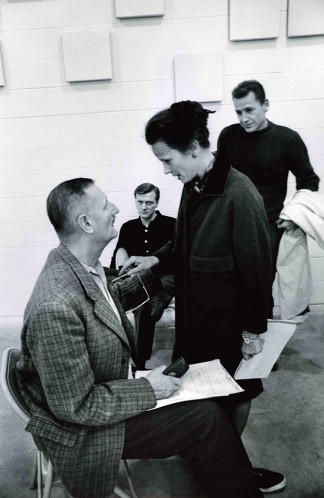
Jessica Tandy, presumably in character as Queen Gertrude, gives director Tyrone Guthrie a piece of her mind in rehearsals for Hamlet, 1963.
Minneapolis an enthusiasm for the project that extended to everyone they met, and felt that the area would work well as an incubator for a uniquely American style of theater. In May 1963, the theater opened with a production of Hamlet, starring George Grizzard and Jessica Tandy. The play and the theater received national acclaim, and the Guthrie has consistently been among the top tier of regional theaters ever since.
One undisputed fact about Tyrone Guthrie comes up over and over again: he was tall. Within the archives, accounts of his height vary from 6’2 to 6’8, and are often followed by mentions of his hawk-like nose and a habit of wearing dirty sneakers. It is quite clear that the man made an impression. In an interview, a longtime doorman for the theater talked about Guthrie’s down to earth nature, and how he loved to dance. Many describe a congenial, if eccentric, figurehead, whose stagings of classics put Minneapolis on the theatrical map. His accent was impeccably English, yet Guthrie had a strong Irish identity, living in his ancestral home of Annaghmakerrig in County Monaghan until his death in 1971. Today, Annaghmakerrig is used as an artists’ residence, as stipulated in Guthrie’s will.
The Guthrie staff consists of a project archivist and two students, who are in the midst of processing nearly 500 linear feet of material in the space of a year. Even though we don’t have the time to go through everything with a fine-tooth comb, it is clear that this collection is rich, varied, and surprising. For instance, not only did the Guthrie boast heavy hitters like Jessica Tandy and Hume Cronyn in its inaugural season, it was also home to such talents as Ron Glass (Firefly), John Carroll Lynch (Fargo, American Horror Story), and T. R. Knight (Grey’s Anatomy), among many others. On the literary side of things, after posting an image of the prompt book for Anthony Burgess’ Oedipus the King, we were contacted by a representative of the International Anthony Burgess Foundation, inquiring after other pertinent materials. Big names aside, some of our favorite items include rehearsal photographs, costume designs, withering readers’ reports of submitted plays, and the psychedelic promotional designs from the 1960s.
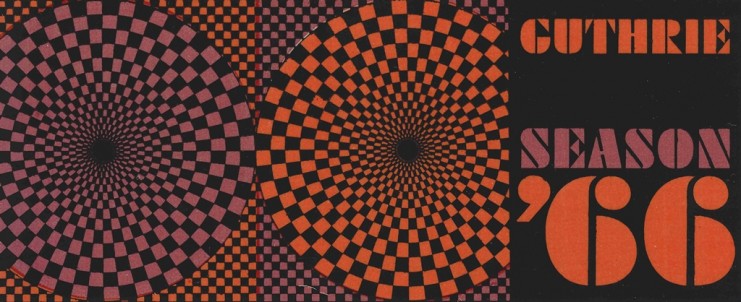
A promotional sticker for the 1966 season.
If you find yourself in Andersen Library, and are interested in seeing some of the highlights of the Guthrie Theater Archives, please stop by the display case on the second floor outside of the Performing Arts Archives office. The exhibit rests under the watchful eye of a figure we haven’t been able to identify so far, but who we have dubbed Inspector Guthrie; you can’t miss it. For more detailed inquiries, please contact project archivist Hannah O’Neill at honeill@umn.edu.


